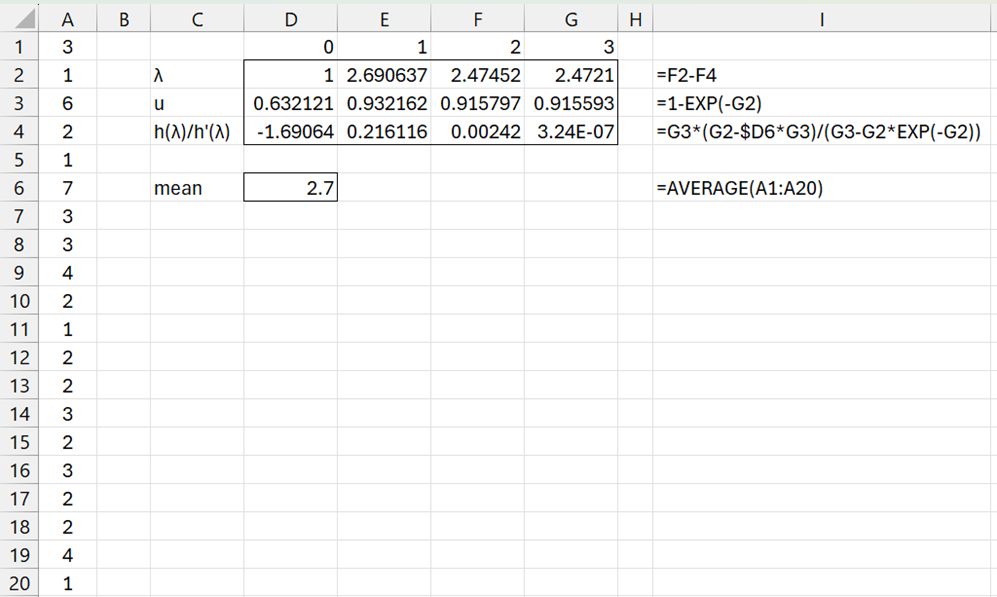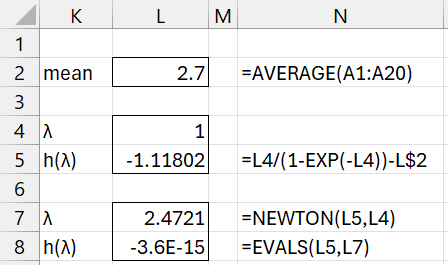Basic Concepts
The Zero-Truncated Poisson (ZTP) distribution is characterized by the λ parameter which is the mean of the corresponding non-truncated Poisson distribution. We can use the mean of a sample, x1, .., xn (taking non-negative integer values only) to create an estimate of the lambda parameter using the MLE approach.
MLE Steps
The log-likelihood function for the ZTP distribution is
![]()
To maximize LL, we set the first derivative to zero.
Solving for the mean of the sample, we get
This is the same expression for the mean as shown in Zero-Truncated Poisson Distribution. Thus, the method of moments and the MLE fitting method produce the same result.
Newton’s method
In any case, we can use Newton’s method to estimate λ. This is done by first defining h(λ) as follows.
We now estimate the value of lambda for which h(λ) = 0. The derivative of h is
It now follows that
where u = 1 – e-λ. Thus, we can estimate λ using Newton’s method via the iteration
Example
Example 1: Determine the best ZTP fit for the data in column A of Figure 1.
Figure 1 – Fitting a ZTP distribution
We see that convergence is relatively quick based on an initial guess of λ = 1 (in cell D2).
We arrive at the same estimate for lambda by using Real Statistics’ NEWTON worksheet function (see Root-finding Functions), as shown in cell L7 of Figure 2.
Figure 2 – ZTP estimate using NEWTON function
Examples Workbook
Click here to download the Excel workbook with the examples described on this webpage.
Reference
Wikipedia (2025) Zero-truncated Poisson distribution
https://en.wikipedia.org/wiki/Zero-truncated_Poisson_distribution









